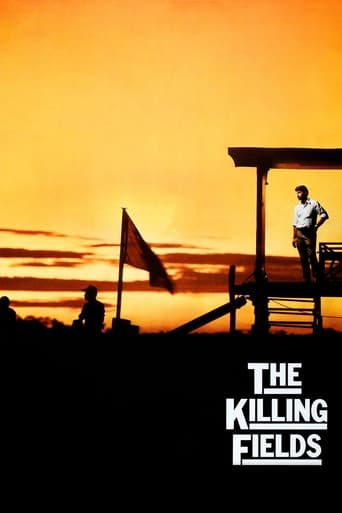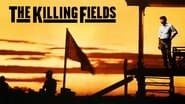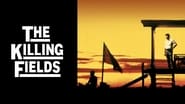classicsoncall
I don't think even this picture can accurately convey the horror of the Khmer Rouge and their policy of Cambodian genocide during the era of the mid-Seventies. It was a terrible time for that country with estimates upward of three million Cambodians massacred by the Pol Pot regime, and all because of an extreme combination of Marxism, Khmer nationalism and xenophobia. When Dith Pran (Haing S. Ngor) stumbled onto the 'Killing Fields' of the film's title while attempting to escape the barbarism of his captors, one can only look on in fascination at an impossibly grotesque landscape. With a more than obvious slant regarding the Khmer Rouge as a by-product of American bombing in Cambodia, one might balance that view with a more careful reading of history, but even so, historians still fall on both sides of the matter. In any case, Cambodia was one of the dominoes that fell during this period with the help of the North Vietnamese Army during the early Seventies.Haing S. Ngor was a fledgling actor when he appeared in this film as Cambodian journalist Dith Pran but one wouldn't know it. The picture and story becomes his following the evacuation of Phnom Penh and the victory of the Khmer Rouge rebels. One can't imagine what emotions and hardships the real Dith Pran must have undergone after the American contingent left. Surviving in turn by drinking cattle blood and relentlessly pursuing any possible means of escape, his story is one for the ages regarding one man's quest for freedom and dignity. There also comes a moment in the film when while viewing today, there's the added poignancy of observing the Twin Towers looming above a New York City landscape when Sydney Schanberg (Sam Waterston) returns home from his Cambodian assignment. To my mind, I don't know of any other film that touches on the Cambodian War and it's attendant horror the way this one does. It was a time when, as Dith Pran so accurately stated at one point - "The enemy is inside us. No one can be trusted." With all that, there's only one question I have about the making of the film and choice of scenic backdrops for much of the action, and that is, just how many times do you think it was necessary to be subjected to all that product placement by Coca-Cola?
snorlax3111984
Pros:1. No review of The Killing Fields is complete without praise for the amazing work of Haing S. Ngor as Dith Pran. What he lacked in official acting training was balanced by a level of sincerity and heartfelt emotion. Sam Waterston may have been nominated for Best Actor and appeared on the cover but Dr. Ngor is the #1 reason the film was so successful. From what I've heard, Dr. Ngor himself witnessed a fair amount of the atrocities that occurred in Cambodia in the 70's. I can definitely see why Dr. Ngor won the Supporting Actor Oscar, though I still say Tom Hulce would have won the 1984 Supporting Actor if Orion hadn't unwisely campaigned him for the Best Actor Oscar.2. Just as Dr. Ngor is so worthy of praise, the movie deserves praise for shifting focus from the Caucasian perspective to this profoundly more interesting story of Dith Pran's journey to freedom. It's a journey with endlessly fascinating turns like when a Mercedes car logo saves Dith's life or when Dith learns some members of the new government are decent people..3. While Dr. Ngor is the jewel of the movie, the Cascasian actors are good. Sam Waterston vividly portrays Syndey's flaws (his impatience to get the story out lands him often in trouble) and his good side (he really cares about Dith Pran's struggle). John Malkovich provides some badly needed levity with his speech on oysters or the reporter using chickens to get stories out of Cambodia. I was a fan of the sitcom "Coach" and I enjoyed the work Craig T. Nelson does here (this movie was released a little more than 4 years before Coach debuted on ABC). I also enjoyed the work of Jillian Sands as the blonde British reporter. This and "Room With A View" marked 2 times in 3 years that Sands was in a Best Picture Nominee.4. Forget about Nightmare On Elm Street or Gremlins, you want good scares in a 1984 film? Watch this movie. It's horrifying enough when a man speaking your language points a gun at you but it's 100 times scarier if you can't understand what he's saying. Dr. Ngor argued with Director Roland Joffe over how soon to reveal the KIlling Fields. I think Joffe was wise to delay the reveal as the build-up made it all the more scarier. No wonder Joffe was Oscar-nominated for Best Director and "The Mission" in 1986 made it 2 Directing nominations in 3 years.5. The movie won a well-deserved Cinematography Oscar. It shows Cambodia's beauty even at the worst of times. I especially loved the scene with Sydney and Dith Pran that just showed their silhouettes.6. The film is great at showing the horrors of war and not just on the battlefield. One minute you're at this cafe giving this silly speech about oysters and suddenly this terrifying blast is just far enough away to avoid hurting you. There's also the darkness of the human soul that war causes, like the family that claimed to be the Pran family to get into the Embassy (not that you can blame the impostors for wanting to escape to freedom). Of course there's always the tragedy of war as Dith Pran learns that nobody is ever really too young to die.7. Best Line Sydney: You forgive me? Dith Pran: Nothing To Forgive , Sydney. NothingCons:1. Good god how I loathe the scene of Malkovich chewing out Sydney in the Bathroom. Sydney does all he can to get Dith Pran back. He helps out the Pran family as much as he can even though Mrs. Pran has no optimism of any kind. It's not like he is full of himself. He readily admits how important Dith Pran is to his journalistic work. Malkovich, get off your high horse and go F yourself.2. I'm a little mixed about the "Imagine" scene. I love John Lennon's work but don't use popular music to tell the audience how to feel. It's completely unnecessary because the scene would still be moving even if it was shown in silence.3. Furthermore, since the film includes John Lennon's "Imagine" and Paul McCartney & Wings' "Band On The Run", I thing they should have completed it with a solo George Harrison song like "What is My Life" and a solo Ringo Starr song like "It Don't Come Easy"
SnoopyStyle
In 1973, New York Times reporter Sydney Schanberg (Sam Waterston) goes to cover the war in Cambodia with Dith Pran as his interpreter. They cover the war along side other journalists like Al Rockoff (John Malkovich) and Jon Swain (Julian Sands). A military adviser (Craig T. Nelson) tries to cover up an accidental American B-52 bombing of an innocent town. Eventually the Khmer Rouge threatens to overrun the country. Dith Pran decides to stay despite the danger while his family leaves. After the fall, Phnom Penh is evacuated and the group finds refuge in the French embassy. The foreigners are allowed to go home but Dith Pran and the locals are not so lucky.Director Roland Joffé creates a masterpiece. It is shockingly intense without warning. It is deep emotionally. He captures the desperate instability and the unknowable fear of the fall of the capital. The chaos and the random brutality is perfect. The acting is superb. Developing a picture has never been more intense. Then the movie does the unthinkable. It hands over the lead and the movie to a no name amateur Cambodian actor. The great surprise is that the movie is as compelling as ever. This is a historical biopic masterpiece from start to finish.
poe426
Ironies abound in THE KILLING FIELDS. "Cambodia is the Nixon doctrine in its purest form," boasts one of the twentieth century's greatest war criminals (who himself lived a long and happy life, thereby putting the lie to any and all notions of karma). The Vietnam War, we're told, resulted in 3 million deaths (70-80% of all casualties were civilian). Does that total factor in the Cambodians who were murdered in the war's "aftermath?" (90% of all deaths in Iraq were civilian, by the way. Evidence has now come to light that the U.$. actually AIDED Saddam Hussein when he used chemical weapons against the Kurds in Iraq. That's right: the same government threatening to bomb Syria back into The Stone Age actually had an active part in the mass murder of Kurdish civilians. Or was it IRANIANS, during the Iran-Iraq War? "Six of one, half dozen of the other," U.$. politicos might say, but the distinction DOES matter, especially if you're Iranian or Kurdish... I may be wrong about the Kurdish murders, but I'm not going to change my comments until I see some paperwork showing otherwise. And there are 30,000 drones in the skies over the U.$., even as I write...) Another of the ironies is what happened to Haing S. Ngor (Dith Pran in THE KILLING FIELDS) after he came to the U.$.: having survived genocide in Cambodia, he was murdered here, in the street. Maybe THIS is the true Killing Field.






